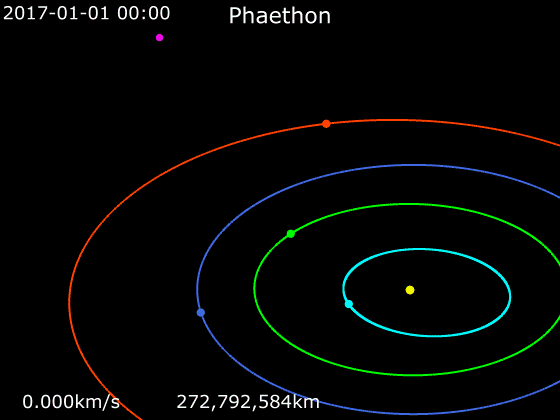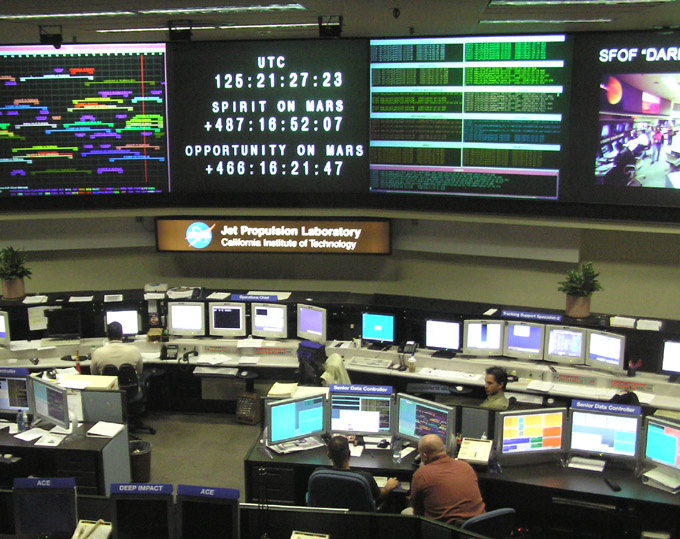|
5786 Talos
5786 Talos is an Apollo asteroid discovered on 3 September 1991 by R. H. McNaught at Siding Spring. It has a very small perihelion distance; only two other named asteroids have one less than 0.2 AU, 1566 Icarus and 3200 Phaethon 3200 Phaethon (previously sometimes spelled Phaeton), provisional designation , is an active Apollo asteroid with an orbit that brings it closer to the Sun than any other named asteroid (though there are numerous unnamed asteroids with small .... References External links * * * 005786 Discoveries by Robert H. McNaught Named minor planets Mercury-crossing asteroids Venus-crosser asteroids 19910903 {{NE-asteroid-stub ... [...More Info...] [...Related Items...] OR: [Wikipedia] [Google] [Baidu] |
Siding Spring Observatory
Siding Spring Observatory near Coonabarabran, New South Wales, Australia, part of the Research School of Astronomy & Astrophysics (RSAA) at the Australian National University (ANU), incorporates the Anglo-Australian Telescope along with a collection of other telescopes owned by the Australian National University, the University of New South Wales, and other institutions. The observatory is situated above sea level in the Warrumbungle National Park on Mount Woorat, also known as Siding Spring Mountain. Siding Spring Observatory is owned by the Australian National University (ANU) and is part of the Mount Stromlo and Siding Spring Observatories research school. More than 100 million worth of research equipment is located at the observatory. There are over 60 telescopes on site, though not all are operational. History The original Mount Stromlo Observatory was set up by the Commonwealth Government in 1924. After duty supplying optical components to the military in Worl ... [...More Info...] [...Related Items...] OR: [Wikipedia] [Google] [Baidu] |
Near-Earth Object
A near-Earth object (NEO) is any small Solar System body whose orbit brings it into proximity with Earth. By convention, a Solar System body is a NEO if its closest approach to the Sun (perihelion) is less than 1.3 astronomical units (AU). If a NEO's orbit crosses the Earth's orbit, and the object is larger than across, it is considered a potentially hazardous object (PHO). Most known PHOs and NEOs are asteroids, but a small fraction are comets. There are over 30,503 known near-Earth asteroids (NEAs) and over a hundred known short-period near-Earth comets (NECs). A number of solar-orbiting meteoroids were large enough to be tracked in space before striking the Earth. It is now widely accepted that collisions in the past have had a significant role in shaping the geological and biological history of the Earth. Asteroids as small as in diameter can cause significant damage to the local environment and human populations. Larger asteroids penetrate the atmosphere to the s ... [...More Info...] [...Related Items...] OR: [Wikipedia] [Google] [Baidu] |
Apollo Asteroid
The Apollo asteroids are a group of near-Earth asteroids named after 1862 Apollo, discovered by German astronomer Karl Reinmuth in the 1930s. They are Earth-crossing asteroids that have an orbital semi-major axis greater than that of the Earth (a > 1 AU) but perihelion distances less than the Earth's aphelion distance (q < 1.017 AU). , the number of known Apollo asteroids is 10,485, making the class the largest group of s (''cf''. the , and [...More Info...] [...Related Items...] OR: [Wikipedia] [Google] [Baidu] |
Julian Day
The Julian day is the continuous count of days since the beginning of the Julian period, and is used primarily by astronomers, and in software for easily calculating elapsed days between two events (e.g. food production date and sell by date). The Julian period is a chronological interval of 7980 years; year 1 of the Julian Period was . The Julian calendar year is year of the current Julian Period. The next Julian Period begins in the year . Historians used the period to identify Julian calendar years within which an event occurred when no such year was given in the historical record, or when the year given by previous historians was incorrect. The Julian day number (JDN) is the integer assigned to a whole solar day in the Julian day count starting from noon Universal Time, with Julian day number 0 assigned to the day starting at noon on Monday, January 1, 4713 BC, proleptic Julian calendar (November 24, 4714 BC, in the proleptic Gregorian calendar), a date at ... [...More Info...] [...Related Items...] OR: [Wikipedia] [Google] [Baidu] |
Julian Year (astronomy)
In astronomy, a Julian year (symbol: a or aj) is a unit of measurement of time defined as exactly 365.25 days of SI seconds each.P. Kenneth Seidelmann, ed.''The explanatory supplement to the Astronomical Almanac'' (Mill Valley, Cal.: University Science Books, 1992), pp. 8, 696, 698–9, 704, 716, 730. Reprinted from the "IAU Style Manual" by G.A. Wilkinson, Comm. 5, in IAU Transactions XXB (1987).Harold Rabinowitz and Suzanne Vogel''The manual of scientific style''(Burlington, MA: Academic Press, 2009) 369. The length of the Julian year is the average length of the year in the Julian calendar that was used in Western societies until the adoption of the Gregorian Calendar, and from which the unit is named. Nevertheless, because astronomical Julian years are measuring duration rather than designating dates, this Julian year does not correspond to years in the Julian calendar or any other calendar. Nor does it correspond to the many other ways of defining a year. Usage Th ... [...More Info...] [...Related Items...] OR: [Wikipedia] [Google] [Baidu] |
Degree (angle)
A degree (in full, a degree of arc, arc degree, or arcdegree), usually denoted by ° (the degree symbol), is a measurement of a plane angle in which one full rotation is 360 degrees. It is not an SI unit—the SI unit of angular measure is the radian—but it is mentioned in the SI brochure as an accepted unit. Because a full rotation equals 2 radians, one degree is equivalent to radians. History The original motivation for choosing the degree as a unit of rotations and angles is unknown. One theory states that it is related to the fact that 360 is approximately the number of days in a year. Ancient astronomers noticed that the sun, which follows through the ecliptic path over the course of the year, seems to advance in its path by approximately one degree each day. Some ancient calendars, such as the Persian calendar and the Babylonian calendar, used 360 days for a year. The use of a calendar with 360 days may be related to the use of sexagesimal numbers. Anothe ... [...More Info...] [...Related Items...] OR: [Wikipedia] [Google] [Baidu] |
1566 Icarus
1566 Icarus ( ; ''provisional designation'': ) is a large near-Earth object of the Apollo group and the lowest numbered potentially hazardous asteroid. It has is an extremely eccentric orbit (0.83) and measures approximately in diameter. In 1968, it became the first asteroid ever observed by radar. Its orbit brings it closer to the Sun than Mercury and further out than the orbit of Mars, which also makes it a Mercury-, Venus-, and Mars-crossing asteroid. This stony asteroid and relatively fast rotator with a period of 2.27 hours was discovered on 27 June 1949, by German astronomer Walter Baade at the Palomar Observatory in California. It was named after the mythological Icarus. Orbit and classification Icarus orbits the Sun at a distance of 0.19–1.97 AU once every 13 months (409 days; semi-major axis of 1.08 AU). Its orbit has an eccentricity of 0.83 and an inclination of 23 ° with respect to the ecliptic. The body's observation arc begins with its offi ... [...More Info...] [...Related Items...] OR: [Wikipedia] [Google] [Baidu] |
3200 Phaethon
3200 Phaethon (previously sometimes spelled Phaeton), provisional designation , is an active Apollo asteroid with an orbit that brings it closer to the Sun than any other named asteroid (though there are numerous unnamed asteroids with smaller perihelia, such as ). For this reason, it was named after the Greek myth of Phaëthon, son of the sun god Helios. It is in diameter and is the parent body of the Geminids meteor shower of mid-December. With an observation arc of 35+ years, it has a very well determined orbit. The 2017 Earth approach distance of about 10 million km was known with an accuracy of ±700 m. Discovery Phaethon was the first asteroid to be discovered using images from a spacecraft. Simon F. Green and John K. Davies discovered it in images from October 11, 1983, while searching Infrared Astronomical Satellite (IRAS) data for moving objects. It was formally announced on October 14 in IAUC 3878 along with optical confirmation by Charles T. Kowal, who ... [...More Info...] [...Related Items...] OR: [Wikipedia] [Google] [Baidu] |
JPL Small-Body Database
The JPL Small-Body Database (SBDB) is an astronomy database about small Solar System bodies. It is maintained by Jet Propulsion Laboratory (JPL) and NASA and provides data for all known asteroids and several comets, including orbital parameters and diagrams, physical diagrams, close approach details, radar astrometry, discovery circumstances, alternate designations and lists of publications related to the small body. The database is updated daily when new observations are available. In April 2021 the JPL Small-Body Database Browser started using planetary ephemeris ( DE441) and small-body perturber SB441-N16. Most objects such as asteroids get a two-body solution (Sun+object) recomputed twice a year. Comets generally have their two-body orbits computed at a time near the perihelion passage (closest approach to the Sun) as to have the two-body orbit more reasonably accurate for both before and after perihelion. For most asteroids, the epoch used to define an orbit is updated twice ... [...More Info...] [...Related Items...] OR: [Wikipedia] [Google] [Baidu] |
NASA
The National Aeronautics and Space Administration (NASA ) is an independent agency of the US federal government responsible for the civil space program, aeronautics research, and space research. NASA was established in 1958, succeeding the National Advisory Committee for Aeronautics (NACA), to give the U.S. space development effort a distinctly civilian orientation, emphasizing peaceful applications in space science. NASA has since led most American space exploration, including Project Mercury, Project Gemini, the 1968-1972 Apollo Moon landing missions, the Skylab space station, and the Space Shuttle. NASA supports the International Space Station and oversees the development of the Orion spacecraft and the Space Launch System for the crewed lunar Artemis program, Commercial Crew spacecraft, and the planned Lunar Gateway space station. The agency is also responsible for the Launch Services Program, which provides oversight of launch operations and countdown m ... [...More Info...] [...Related Items...] OR: [Wikipedia] [Google] [Baidu] |
Jet Propulsion Laboratory
The Jet Propulsion Laboratory (JPL) is a federally funded research and development center and NASA field center in the City of La Cañada Flintridge, California, United States. Founded in the 1930s by Caltech researchers, JPL is owned by NASA and managed by the nearby California Institute of Technology (Caltech). The laboratory's primary function is the construction and operation of planetary robotic spacecraft, though it also conducts Earth-orbit and astronomy missions. It is also responsible for operating the NASA Deep Space Network. Among the laboratory's major active projects are the Mars 2020 mission, which includes the '' Perseverance'' rover and the '' Ingenuity'' Mars helicopter; the Mars Science Laboratory mission, including the '' Curiosity'' rover; the InSight lander (''Interior Exploration using Seismic Investigations, Geodesy and Heat Transport''); the ''Mars Reconnaissance Orbiter''; the '' Juno'' spacecraft orbiting Jupiter; the '' SMAP'' satellite for earth ... [...More Info...] [...Related Items...] OR: [Wikipedia] [Google] [Baidu] |
Apollo Asteroids
The Apollo asteroids are a group of near-Earth asteroids named after 1862 Apollo, discovered by German astronomer Karl Reinmuth in the 1930s. They are Earth-crossing asteroids that have an orbital semi-major axis greater than that of the Earth (a > 1 AU) but perihelion distances less than the Earth's aphelion distance (q < 1.017 AU). , the number of known Apollo asteroids is 10,485, making the class the largest group of s (''cf''. the , and [...More Info...] [...Related Items...] OR: [Wikipedia] [Google] [Baidu] |



